Get ready for the summer of bugs
Invasive pests. Ash borers, spotted lanternflies, and gypsy moths: As we emerge from one plague, we confront other plagues that are attacking our trees.
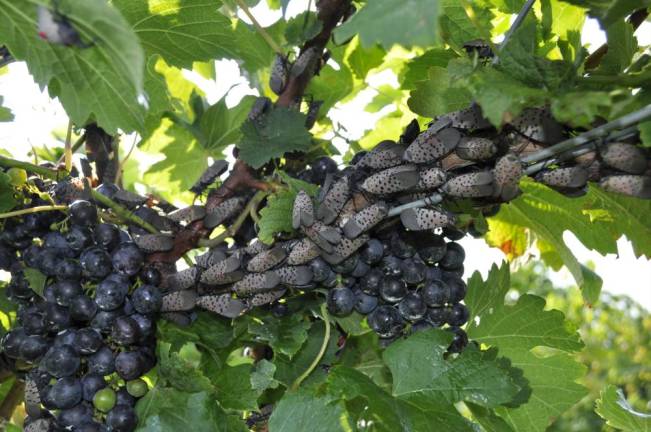
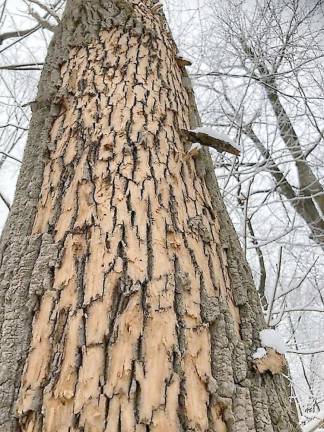
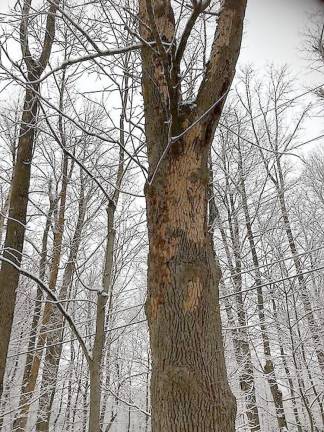
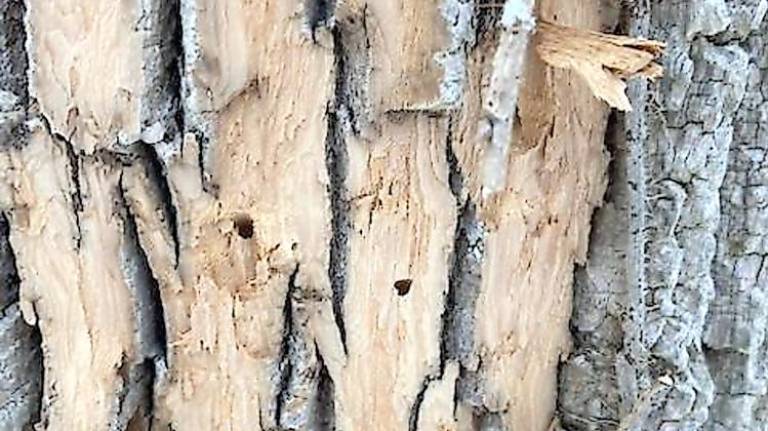
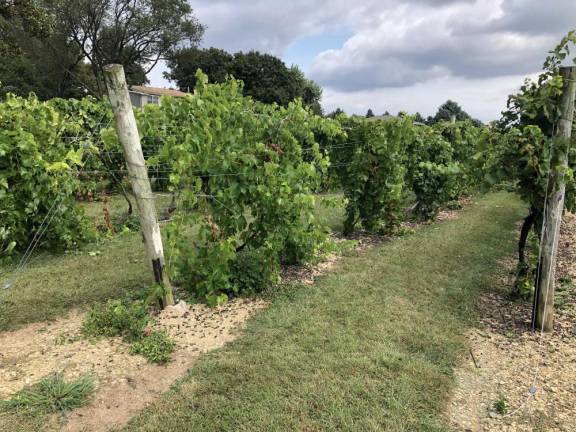
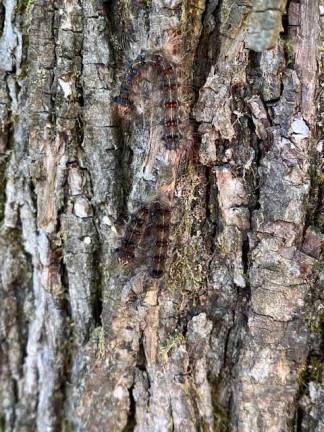
As we settle into summer with one infectious disease less on our minds, expect to see more infestations of another kind. Welcome, invasive pests.
Trees, like people, are under attack from bugs that travel around the world on planes and ships.
“My concern is that Covid kind of put a stop to the spread of these invasive pests, since there was less movement of materials and humans,” said Dr. Julie Urban, a research associate professor at Penn State with a focus in plant hopper biology. “I’m worried this might be a transitional year in terms of population growth.”
Since most of these pests appear in either early July or late August, that’s when we will discover the extent of the spread.
Dr. Kelli Hoover, a professor of entomology at Penn State University, said it’s gotten to the point where the United States can expect to see a new invasive pest every year or two, as global trade rises. Inspectors examine only 5 percent of imports.
Urban talked about a vineyard in Ellenville, N.Y. that showcases the problem perfectly. “It’s this beautiful vineyard which has had some damage with spotted lanternflies,” she said. “But if you look out over the vineyard’s hill, you’ll see this nice reflective surface out in the distance. And it’s actually the roof of an Amazon distribution center,” where imports abound.
Some pests, like gypsy moths, cause scattered outbreaks every few years. Other pests are ready to make their hot new debut this summer.
As with Covid, remedies include quarantine and the regulation of movement. “If you have a quarantine, you cannot move any plant material, logs, anything, without doing an extensive search through the material to make sure it’s not infested,” said Hoover.
“We either have no international trade, or we have international trade where we implement the best standards to prevent movement of invasive species moving between countries,” she said.
When spotted lanternflies broke out in Pennsylvania a couple years back, ornamental nurseries were most affected. They had trouble selling plant materials to other states. The flies have now made their way through most of the Northeast anyway.
Emerald ash borer
The emerald ash borer (EAB) has so far killed more than 100 million ash trees in the United States. The U.S. Department of Agriculture (USDA) says the beetle is native to Asia and likely arrived in the United States hidden in wood packing materials. The first U.S. identification was in Michigan in 2002, and EAB has since been detected in 35 other states.
Adult beetles leave distinctive D-shaped holes in the outer bark. Other than that, it’s nearly impossible for the average person to detect signs of infestation. Once those signs are found, it’s usually too late to save the tree.
“It basically wipes the tree out from having any energy,” said Hoover.
As the bark peels back, the damaged tissue underneath is revealed. That tissue is the “sugar” made by photosynthesis. Once the emerald ash borer gets ahold of it, it’s hard to stop what comes next.
Hoover has seen it first-hand: just a few years ago, when the emerald ash borer spread aggressively into Central Pennsylvania, Hoover had to take down 22 ash trees in just one acre of her backyard.
Pete McGrath of Vernon, N.J., told us back in December: “I am going to be forced to take down about 12 large ash trees on my property since they are infested with Emerald Ash Borer beetles. It’s too crazy.”
The borers have destroyed 7 percent of ash trees in New York state, said Jim Wickes, a certified arborist and tree expert based in Rockland and Orange County, N.Y., who loves to nag me, his daughter, about invasive bugs at the dinner table.
“A strength in a forest is in its diversity,” he said. “We’re more susceptible to these kinds of outbreaks because there is less diversity in our forests and landscapes.”
Ash trees make up 8 percent of New York State’s trees, so the effects of pest damage are overwhelmingly visible.
According to a representative of the New Jersey Department of Agriculture, approximately 9 percent of the state’s total forested area, or 24.7 million ash trees, are susceptible to an EAB infestation. “In addition,” the representative said, “ash has been commonly planted as street trees and on private properties in many cities and towns.”
Sparse forests, dead branches, scant leaves — there goes an entire tree species from just one pest.
“A place, like, say, Goosepond Park, or any micro-forest in Orange County, is made up of a majority of ash trees since the environment for ash trees thrives in wetlands, and now they’re all gone,” said Wickes.
While the emerald ash borer has four life stages, the larvae stage is the most damaging since it feeds off the trees’ nutrients and water. An infestation can lead to death in two to four years.
A tree that is about 50 percent infested can still be saved, said Hoover. “Injecting the tree with a systemic insecticide is one of the most common,” she said. “There are many ways to get rid of them, but you really have to keep after them.”
The New York Department of Environmental Conservation determines what chemicals can and cannot be used for pests for New York State. The DEC now allows arborists to use some pesticides they couldn’t use before to “give us more tools in the toolbox,” said Wickes, a certified pesticide applicator.
The USDA says some of those treatments can only control, not cure, the problem.
“The biggest deal about these invasive species is that when they take out a native species, it changes the whole food web,” said Hoover. “It’s like throwing a pebble in a pond, it creates all these ripples. There’s ripple effects from organisms, to the soil, to the top of the tree.”
Spotted lanternfly
The thumb-sized spotted lanternfly, distinguished by its red and black spots, are a vintner’s worst nightmare. They’re extremely fast-moving and have an appetite for grapes and, their favorite, the tree-of-heaven, which itself is an invasive species. “We haven’t seen them kill anything consistently except for the tree-of-heaven, which is an invasive weed that we don’t want anyway,” said Hoover.
The spotted lanternfly traveled on a stone shipment from China to Berk’s County, Pa., back in 2014. The eggs, which looked like a smear of mud, weren’t detected until it was too late. The pest has now spread to 34 counties in Pennsylvania and a handful of other states, including New York and New Jersey.
“It is very hard to study and control because it’s moving all the time,” said Hoover. Unlike the emerald ash borer, which spends its whole life cycle on one kind of tree, Hoover said spotted lanternflies lay their eggs everywhere: trees, rocks, grass, even fences.
Spotted lanternflies also move from place to place in large numbers once they sense their food supply is getting low.
“Their primary method of spreading is by hitchhiking on any number of types of transportation,” according to a New Jersey Department of Agriculture public information officer.
The Pennsylvania Department of Agriculture requires a permit for all vehicles entering quarantined counties like Pike County, which joined the list in April. Agriculture officials said they conduct compliance and enforcement checks in conjunction with the Pennsylvania State Police.
“We don’t know when they move or why they move,” said Hoover. “That in itself makes it so hard to treat because, what are we supposed to treat?”
Ask any vineyard owner how they feel about the pesky suckers. “Basically, this will definitely injure vineyards,” said Dr. Urban.
Urban is an expert in all things spotted lanternfly. She worked on the first case in 2014. “Some of the work we’re doing is trying to figure out physiologically what it is they’re exactly doing that’s damaging to vineyards,” she said.
Spotted lanternflies hamper the ability of grapes to protect themselves in winter. “They’re essentially robbing the plant of the sap that serves as anti-freeze for the grapes,” said Urban.
Northeastern vintners aren’t the only ones panicking. “California is freaking out,” she said. “We have had some experts at Penn State flown out to vineyards with their findings and possible treatment plans.”
In one upstate New York vineyard, contact insecticides were used to kill thousands of spotted lanternflies. “When you have that movement of spotted lanternflies around September, it’s too close to harvest for wineries to apply systemic insecticides, which absorb into the plant cells,” said Urban. “So, instead we have to apply contact insecticides, which makes direct contact with the actual bug.”
The spotted lanternfly is a sap feeder that produces a lot of what Hoover calls “honeydew,” which can be a big nuisance for homeowners.
“Honeydew is produced from their butts,” as Hoover so elegantly put it. “It’s leftover sugars that the bug can’t digest, leaving sticky residue on your cars, outdoor decks, outdoor furniture, everywhere. That substance can also lead to something called ‘black fungus’ which is really difficult to remove.”
Gypsy moths
According to the USDA, gypsy moths are one of the most destructive pests of trees and shrubs to be introduced into the United States. Gorging on leaves, gypsy moth caterpillars defoliate and weaken, sometimes fatally, more than 300 species of trees.
They first showed up in the States in 1868 and since 1970 have defoliated more than 75 million acres. They’re hard to track down. Gypsy moth populations peak every 10 to 15 years, and then boom for about two or three years until they’re finally struck down by viral and bacterial infections.
Currently, they’re on a cycle in upstate New York and parts of central Pennsylvania. There are heavy infestations in Monroe and Highland Falls in Orange County, N.Y.
“They’re a huge problem in oak-heavy forests, which is the classic Northeastern forest,” said Hoover.
Wickes says gypsy moths are less of a problem in one way. “Gypsy moths are a player that comes and goes, and has cycles which are easier to predict,” he said. “So you can treat in advance to the infestation, and when they show up the tree is protected. But with an insect like EAB, or spotted lanternfly, they’re able to migrate and reach further distances, so it becomes difficult to predict or treat.”
To prevent spread, the USDA requires homeowners remove gypsy moth egg masses from household goods prior to moving from an infested to a non-infested area. Some even may face penalties for failing to do so.
So, what should someone do if they see any of these invasive pests hanging around their backyard?
Wickes has this advice: After you treat your trees, and report them to your local department of agriculture. “Step on them.”
“The biggest deal about these invasive species is that when they take out a native species, it changes the whole food web. It’s like throwing a pebble in a pond, it creates all these ripples. There’s ripple effects from organisms, to the soil, to the top of the tree.” Dr. Julie Urban